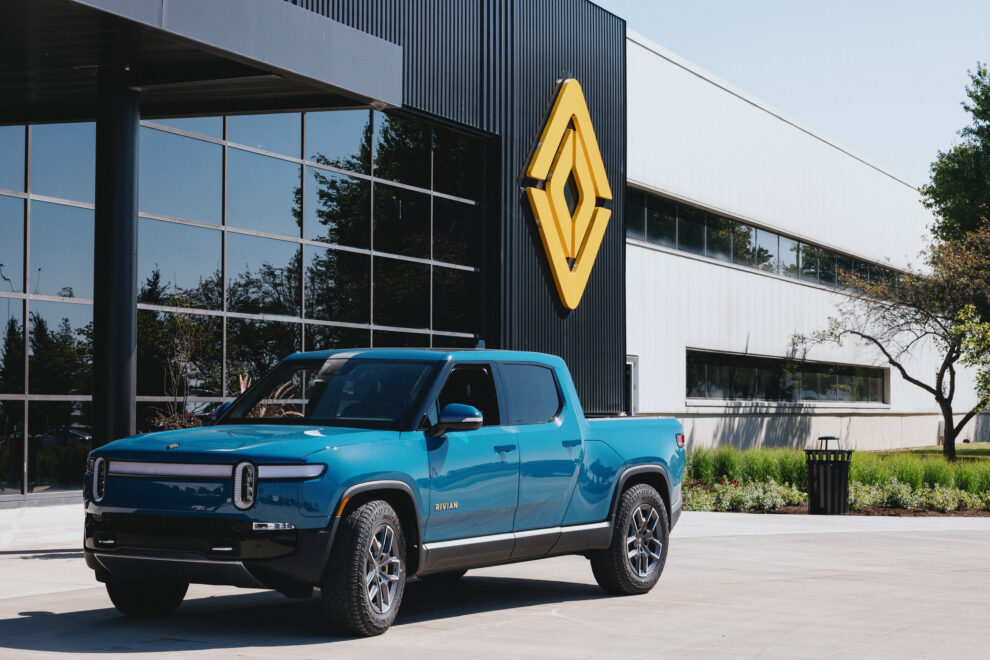The electric pickup truck maker still needs to overcome a lot of challenges.
When Rivian Automotive (RIVN -10.95%) went public in November 2021, many optimistic investors thought it could become the next Tesla (TSLA -2.33%). Rivian was already manufacturing thousands of electric vehicles, it was getting significant backing from Amazon and Ford Motor Company, and it was carving out a niche in electric pickup trucks and vans.
That’s why Rivian’s stock more than doubled from its IPO price of $78 to an all-time high of $172.01 a week later. But today, it trades at about $13. Its stock plunged as it missed its production targets and racked up steep losses, and Ford liquidated most of its shares in 2022. Amazon held on to its shares, but the bullish dreams of Rivian becoming the “next Tesla” quickly evaporated as the automaker struggled to ramp up its production.

Image source: Rivian.
Rivian still faces a lot of challenges, but its stock looks cheap at just 2 times next year’s sales. Tesla trades at nearly 7 times next year’s sales. Could this unloved automaker still ramp up its production and become the next Tesla?
What happened to Rivian over the past three years?
Rivian currently sells three types of vehicles: the R1T pickup, the R1S SUV, and custom delivery vans for Amazon. Before Rivian went public, it claimed it could produce 50,000 vehicles in 2022. But after its public debut, it halved that forecast and only produced 24,337 vehicles for the full year. Its production was throttled by supply chain constraints, the slowing growth of the electric vehicle (EV) market, and other macro headwinds.
Rivian overcame those challenges and produced 57,232 vehicles in 2023. That recovery was driven by the production of its in-house Enduro drive unit, which reduced its manufacturing costs and dependence on third-party components.
The bulls expected Rivian to maintain that momentum, but it only expects to manufacture about 57,000 vehicles in 2024. It expects its production to temporarily flatline as it deals with tougher macro headwinds, intense competition, and a shutdown of its main plant in Illinois for several weeks to upgrade its production capabilities. That grim outlook, along with its persistent losses, crushed Rivian’s stock.
|
Metric |
2022 |
2023 |
1H 2024 |
|---|---|---|---|
|
Vehicles produced |
24,337 |
57,232 |
23,592 |
|
Vehicles delivered |
20,332 |
50,122 |
27,378 |
|
Revenue |
$1.66 billion |
$4.43 billion |
$2.36 billion |
|
Net loss |
($6.75 billion) |
($5.43 billion) |
($2.90 billion) |
Data source: Rivian.
What’s next for Rivian?
Rivian aims to launch its cheaper R2 SUV in 2026, followed by its higher-end R3 and R3X SUVs between late 2026 and early 2027. It will also continue to fulfill Amazon’s long-term order for 100,000 of its electric delivery vans through 2030, but it recently broke free of the contract’s exclusivity clause and plans to sell its vans to other companies.
From 2023 to 2026, analysts expect Rivian’s revenue to grow at a compound annual growth rate (CAGR) of 29% to $9.54 billion. Based on its current average prices, that outlook implies it can sell nearly 108,000 vehicles in 2026.
That would be comparable to Tesla’s growth trajectory from 2015 to 2017, when its annual deliveries more than doubled from 50,517 vehicles to 103,091 vehicles. By 2023, Tesla’s annual deliveries had risen nearly 18 times to 1.81 million.
It would be tough for Rivian to replicate Tesla’s growth spurt. Rivian isn’t backed by big government subsidies like Tesla, the EV market is more mature and saturated than it was a decade ago, and consumers’ price expectations for EVs are plunging. Rivian also lacks Tesla’s brand appeal, which is consistently reinforced by its nationwide network of Supercharger stations.
But this June, Rivian launched a new joint venture with Volkswagen to co-develop new EV architecture and software. As part of that partnership, Volkswagen will invest up to $5 billion in Rivian and the joint venture. Rivian expects that lifeline to keep its coffers full as it ramps up its production and rolls out new vehicles.
Could Rivian become the next Tesla?
Rivian expects to squeeze out a positive gross margin by the fourth quarter of 2024, but analysts expect it to stay deeply unprofitable. Tesla was also unprofitable from 2015 to 2017, but its losses weren’t nearly as steep as Rivian’s.
When Tesla’s deliveries topped 100,000 units for the first time in 2017, it posted a net loss of $1.96 billion on $11.76 billion in revenue. Analysts expect Rivian to rack up a much steeper net loss of $3.37 billion on $9.54 billion in revenue in 2026.
Even with Volkswagen’s support, it could be difficult for Rivian to scale up its business. The global EV market could still expand at a CAGR of 13.8% from 2024 to 2032, according to Fortune Business Insights, but that would be much slower than the industry’s growth rate over the past decade. A lot of that growth will also be driven by China, where Tesla is a major player but Rivian doesn’t have a market presence.
Therefore, it’s doubtful Rivian will ever become as big as today’s Tesla. It’s faring better than other market underdogs like Lucid and Polestar, but it’s far too early to consider it the next major EV leader.
John Mackey, former CEO of Whole Foods Market, an Amazon subsidiary, is a member of The Motley Fool’s board of directors. Leo Sun has positions in Amazon. The Motley Fool has positions in and recommends Amazon, Tesla, and Volkswagen. The Motley Fool recommends Volkswagen Ag. The Motley Fool has a disclosure policy.








